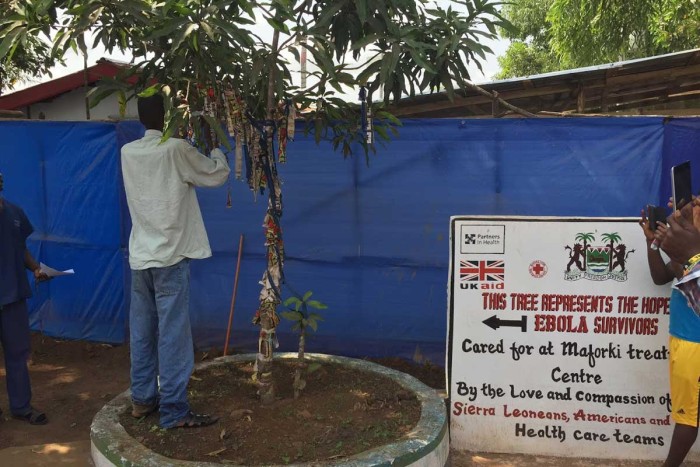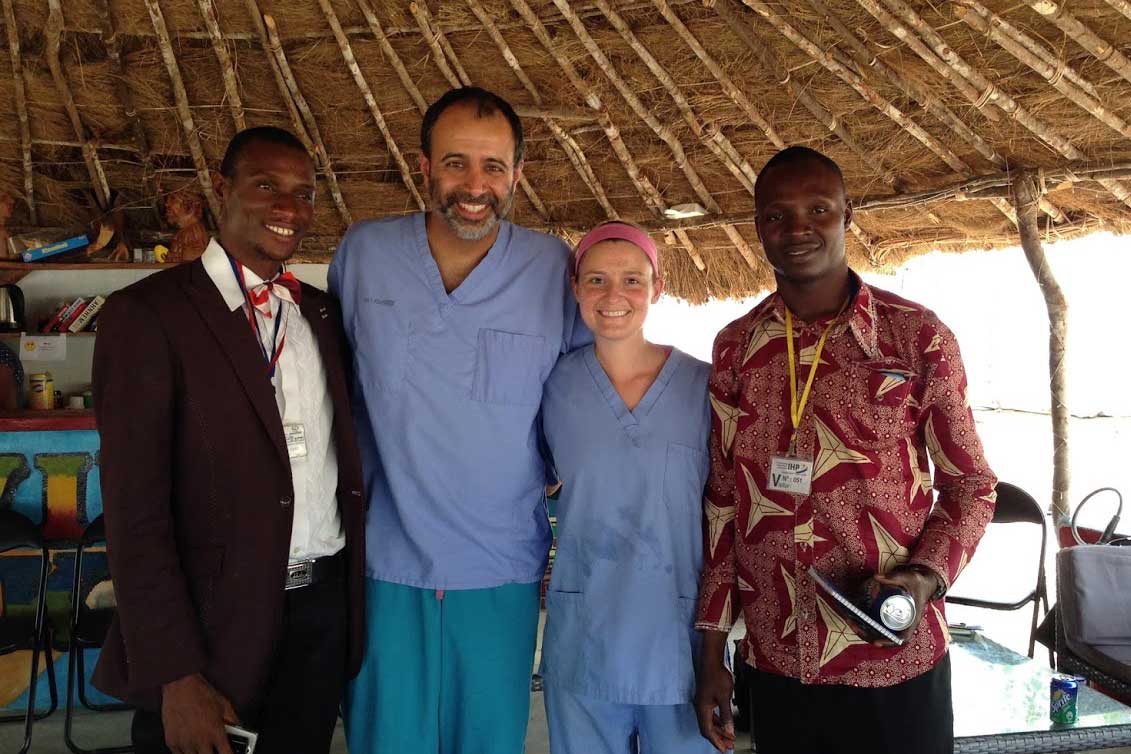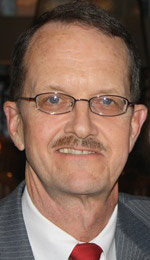Ebola medical team develops guidelines for treating infected children
Protocol aims to improve young patients' chances of survival during future outbreaks
 Indi Trehan/Washington University
Indi Trehan/Washington UniversityAn Ebola survivor ties a ribbon to a “Survivor’s Tree” in Port Loko, Sierra Leone, in 2015. When patients tested negative for Ebola and were discharged from treatment, they tied ribbons to the tree to celebrate and to show their communities they were no longer sick or contagious. Researchers who treated Ebola-infected children in Sierra Leone have developed a set of guidelines aimed at improving the treatment of children with Ebola. Such children, particularly those under age 5, faced a high risk of death in the outbreak.
When the Ebola virus outbreak erupted in West Africa in 2014, children infected with the virus — particularly those under age 5 — faced overwhelming challenges. Not only was there a high death rate among young children infected with the disease, they often were isolated from their families, leaving them feeling distressed and without the intensive care they needed.
In the height of the epidemic, exhausted health-care workers found themselves with few options to care for the afflicted, including the virus’s littlest victims. Patients with Ebola were given large amounts of fluid to drink to counteract the dehydrating effects of diarrhea and vomiting. Many times, that was all that could be done for them.
As the outbreak waned in the winter of 2015, however, a fresh army of health-care workers at the largest Ebola treatment unit (ETU) in Port Loko, Sierra Leone, began exploring how best to treat children with the virus and improve their chances of survival. Their aim: to establish a protocol for treating children with Ebola.
Those guidelines — a protocol the researchers believe will provide a basis for treating children during future outbreaks — are published Friday, Jan. 8, in The Journal of Pediatrics. They suggest an aggressive approach that includes giving children fluids intravenously; treating other possible infections; feeding them highly fortified food; and greatly increasing the amount of bedside care they receive.
“We know Ebola is going to come back,” said the study’s first author, Indi Trehan, MD, an assistant professor of pediatrics at Washington University School of Medicine in St. Louis. “But the next time an Ebola treatment unit is opened, the physicians, nurses and other health-care providers shouldn’t have to start from scratch. Our goal in publishing our findings is so they can have something solid to start with. It may not be perfect — we invite others to build on it — but it’s from our collective experience. This is how we think children with Ebola should be cared for.”
 Courtesy of Indi Trehan
Courtesy of Indi TrehanTrehan and his co-authors treated Ebola patients at a 106-bed ETU run by the Sierra Leone Ministry of Health in collaboration with Partners In Health (PIH), a Boston-based nonprofit organization that works to strengthen health systems in poverty-stricken areas. When the outbreak was at its peak, there weren’t opportunities or resources to do more than offer minimal care. But as the epidemic ebbed, researchers set their sights on developing a more aggressive approach to treating children with the disease.
The team examined emerging literature and case reports regarding the ongoing outbreak, adapted World Health Organization (WHO) and Médecins Sans Frontières (Doctor Without Borders) guidelines from previous viral hemorrhagic fever outbreaks, compared notes with colleagues throughout Sierra Leone, and pulled from their own clinical experiences to shape a protocol they felt would be effective and feasible.
When resources and manpower allowed, the team applied as much of the protocol as they could in the Port Loko ETU. Trehan’s team — initially led by Shawn D’Andrea, MD, instructor of emergency medicine at Harvard Medical School — used, when possible, two IVs per patient to administer fluids before the patients’ veins could collapse. The staff worked to boost young patients’ electrolytes, targeted other possible infections with antibiotics and antimalarial medication, and provided medicine to reduce vomiting and diarrhea.
Appreciating the importance of good nutrition in children’s ability to recover from serious infections, the staff increased the use of ready-to-use therapeutic foods. (Trehan recently was invited to join a WHO committee that focuses on malnutrition.)
In collaboration with colleagues from Sierra Leone and the Cuban Medical Brigade, clinic leaders also ensured that the unit was manned 24 hours a day. Round-the-clock staffing is key for pediatric patients, especially as their small bodies battle the effects of diarrhea and vomiting, Trehan said. But psychological support is also critical, he stressed. In the United States, rarely is a hospitalized child left alone. To allow for such support, the researchers recommend that Ebola survivors — patients with antibodies to the virus — be trained to help staff ETUs so that young patients are not alone.
The authors also recommend that future ETUs have pressure bags that allow for IV fluids to be administered faster, and ultrasound machines to help obtain access to veins and determine whether patients are hydrated.
“We ideally would like to get them the same level of care they would get if they were flown back to the U.S.,” Trehan said.

Ebola is a disease of health inequity, explained the study’s senior author, retired Army Col. Charles W. Callahan, DO, a PIH medical volunteer and vice president of Population Health at the University of Maryland Medical Center in Baltimore. “Many of these children don’t have to die. The mortality has been so high in West Africa because the health-care systems are still so weak and under-resourced.”
Callahan, also a professor of pediatrics at the Uniformed Services University of the Health Sciences in Bethesda, Md., tells of a young girl his team treated in Sierra Leone. She survived Ebola but then suffered severe complications of malnutrition. Had the ETU been overwhelmed and the staff been unable to manage her complications, the child would have died, Callahan said.
“She is exactly the kind of patient these protocols are targeting and is a happy success story,” he said. “Her care was very challenging to the system in Sierra Leone. But she did survive, and many others probably could have, too. The disease is not gone. When another outbreak occurs, perhaps pediatricians and those caring for children now will have a place to start.”
After a few weeks in the ETU, Trehan and another of the unit’s clinical leaders encouraged other medical teams to use the protocol whenever possible. However, the researchers noted, certain conditions and lack of access to some resources prevented any rigorous, evidence-based demonstration of the guidelines’ effectiveness.
“It’s a distillation of our collective experience,” Trehan said. “We want people who’ve worked with Ebola patients to tell us if we’re wrong or right and what else we can do to have a solid approach in place for future outbreaks. Now — when there are no active Ebola cases anywhere in the world — is the time to actively and vigorously have this conversation.”






